This column was originally posted Saturday Nov. 16th but is now being re-published Friday Nov. 22nd at 1:30 p.m. Eastern Time to coincide with the hour President John F. Kennedy was shot and killed 50 years ago this day and date in Dallas (12:30 p.m. Central Standard Time). Flags fly at half-staff to- day throughout the nation and moments of silence are being observed everywhere at 1:30 p.m. EST and also at 2 p.m. to commemorate the exact time he was pronounced dead (1 p.m. CST) in 1963.
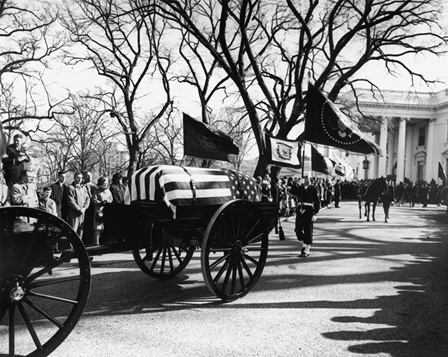
Horse-drawn limber & caisson carry John F. Kennedy’s casket from White House en route to burial at Arlington National Cemetery, Nov. 25, 1963. Note riderless horse, “Black Jack,” named for Gen. of the Armies John J. Pershing, following behind caisson, at right.
INTEREST FUELED BY KENNEDY MYSTIQUE,
CONSPIRACY THEORIES THAT WON’T DIE
Government refusal to release
all evidence and report files
NOV. 22 REMAINS AN UNFORGETTABLE DAY
By David Maril
Ask me what the date is of Christmas each year and I have to look at a calendar.
We all know Thanksgiving is on a November Thursday but the specific date varies from year to year.
The only date that sticks in my mind, other than New Years, April 15 tax day, 9-11 and a birthday or two, is Nov. 22nd.
The impact of that date, which began on a surreal Friday afternoon in 1963, will always signify to me the day optimism and positive activism began to lose the war against political cynicism and skepticism about government.
The date of Nov. 22 will always have strong significance for those of us who were old enough in 1963 to absorb the impact of the assassination of President John F. Kennedy.
Although it’s been 50 years since JFK was shot in a Dallas motorcade, the memories remain fresh. We recall where we were and what we were doing when we heard of the shooting.
I was walking down a hallway at Park School in Brooklandville, after a phys ed class had ended. Suddenly all the upper school students, from seventh through twelfth grade, were told to report back to the gymnasium. After we all filed in and were standing in the middle of the basketball court, a somber-looking Robert Thomason, the school’s headmaster, walked in and reported that John F. Kennedy, the President, had been shot in Dallas and had died.
The response to his announcement that the school day was ending early was silence as we shuffled out of the gym to head home for a weekend of mourning.
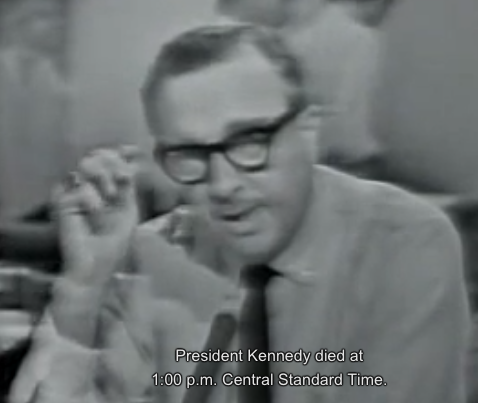
On live television, at 1 p.m. (CST) Nov. 22, 1963, CBS News Anchor Walter Cronkite announces death of President John Fitzgerald Kennedy, 46, in Dallas.
Although this was long before the days of around-the-clock cable TV news coverage, everyone seemed to camp-out in front of their television sets, watching this grim saga unfold. We were hoping that Walter Cronkite or Chet Huntley and David Brinkley could make some sense of the tragedy.
This proved to be the birth of TV news around-the-clock coverage.
The usually unflappable Cronkite came close to sobbing when he first read the bulletin that Kennedy had died. Huntley, always an anchorman of strict formality, was moved enough to go off on a tangent, editorializing about the dangers of hate and violence in the country.
National television coverage revealed millions of people walking aimlessly along streets in tears. Looking back to the 1960s when we had to endure assassinations of JFK, Martin Luther King and Robert Kennedy, you wonder who our last political leader was whose death would draw this type of widespread sobbing and emotional reaction.
From Friday afternoon through the graveside ceremony on Monday, the nation absorbed a soundtrack of muffled drumbeats and somber military hymns accompanying the sad images of the Kennedy Family in shock and mourning.
Whether or not at the time you agreed with Kennedy politically, he was a charismatic figure. After the drab Dwight Eisenhower years, the youthful Kennedy conveyed optimism and — one of his favorite words — vigor. His greatest legacy is influencing many young people to make sacrifices and become interested in public service, bolstering such organizations as the Peace Corps.
Kennedy’s death, not even three years into his term as President, accelerated a growth of cynicism with politics and government that continues to this day. Before Kennedy’s body had even been flown from Dallas to Andrews Air Force base that Friday night, conspiracy theories were already spreading.
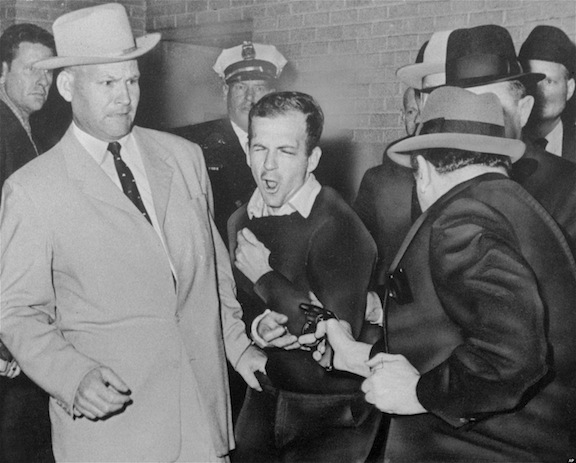
Dallas nightclub owner Jack Ruby, right, kills JFK assassin Lee Harvey Oswald, center, on national TV, live, Sun. Nov. 24, 1963, two days after Kennedy’s death.
Although Lee Harvey Oswald had been arrested and was the chief suspect, many Americans believed he was either a pawn or being used as a scapegoat to draw attention away from the true assassins. Many still believe that today.
The paranoia increased with the unbelievable sight, on live national television, of Oswald being shot dead as he was moved to a different jail location, by nightclub owner Jack Ruby.
I can still hear the voice of NBC’s Tom Pettit exclaiming, “Lee Oswald has been shot,” in the midst of describing the prisoner being transferred out of a Dallas jail around lunchtime on that Sunday, three days after the assassination. The ineffectiveness of the Dallas police in preventing Oswald’s murder made the possibility of a conspiracy seem even more likely.
Following 50 years of commission reports, investigations, miles of film footage, hundreds of books and dozens of documentaries, the numerous conspiracy theories remain strong today.
They include:
— Kennedy was hit by more than one assassin.
— The CIA was behind the assassination because Kennedy was considered too liberal and a threat to the organization’s power.
— It was the Mafia, as payback for Kennedy’s failure to fulfill campaign promises he’d made.
— Lyndon Johnson set the whole thing up so he could become President.
— It was a right-wing hate group.
— It was a Communist plot, tied in with JFK’s hardline stance against Fidel Castro.
— It was related to retaliation for foreign assassination plots the U.S. was accused of supporting.
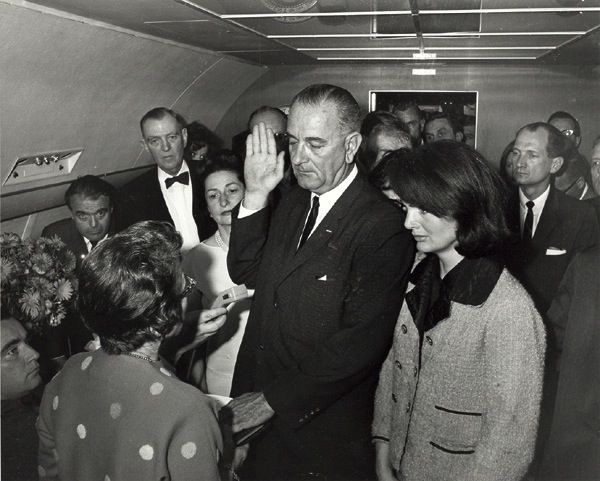
Vice President Lyndon B. Johnson takes oath of office as 36th President on Air Force 1, Nov. 22, 1963, as outgoing First Lady Jacqueline Kennedy, right, looks on. The new President’s wife, Lady Bird Johnson, is at his right.
The fact that many records related to the assassination remain sealed has fueled the speculation. Over the years, there have been reports Kennedy’s body was tampered with after the assassination and autopsy photos were altered.
Immediately after Kennedy’s’ death, unrest and skepticism of the government grew with the division in the country over the War in Vietnam and, in 1968, the assassinations of Robert Kennedy and Dr. Martin Luther King. This unrest made the JFK years, dominated by optimism and the youthful family’s “Camelot” images, seem even more appealing and his assassination an even greater tragedy.
And it’s a story that won’t die. The family continues to make news:
In 1999, JFK’s son, John Jr., was killed in a plane crash.
Recently, Caroline Kennedy, JFK’s daughter, was appointed ambassador to Japan.
Books about JFK’s personal life, with more assassination theories, are still being written.
But no matter how astounding any new information is, nothing will be as numbing as the news we heard on that November day in 1963.
One wonders if interest will remain so strong in the Kennedy assassination as the percentage of people who lived through that tragic weekend decreases.
Ten years ago, I remember Dan Rather, the veteran CBS anchor who had covered the assassination as a reporter, was asked about its historical significance.
Rather remarked that the episode was naturally fading in importance because more than half the people in the United States were either not born or had been too young to remember the events of Nov. 22, 1963. He added he was confident that in 100 years history textbooks would relegate the Kennedy assassination to a paragraph or two.
Today, Rather is correct in his belief that most Americans under the age of 56 don’t understand the anguish this nation felt over the sudden loss of a young, charismatic leader. You had to experience the influence personally of this high-profile president, whose wife and two children became a glamorous family photo album for the nation, in magazines like Life and Look, to understand his importance.
Rather is wrong, however, in assuming that history will cut the Kennedy assassination down to a much smaller size.
First of all, despite the terrorism all over the world, assassinations of presidents are not commonplace in our society. Kennedy was only our fourth, and last, president to be slain in office.
It’s true many Americans don’t know much about the assassinations of William McKinley and James Garfield. Garfield served less than a year, and McKinley, whose biggest claim to fame may have been defeating William Jennings Bryan twice, was overshadowed by Teddy Roosevelt and his Rough Riders storming up San Juan Hill.
However, although it’s been 148 years since Abraham Lincoln was assassinated by John Wilkes Booth, there’s still significant interest in the details of that event. Historians ponder how the nation’s recovery after the Civil War might have been smoother if Lincoln had been able to serve his full second term. There’s continuing speculation over what the magnitude of Lincoln’s overall accomplishments would have been.
This isn’t to say that Kennedy was in Lincoln’s class as a president. He made a major foreign policy mistake with the Bay of Pigs early in his term, and he was slow to push for Civil Rights legislation. In recent years his reputation has suffered because of revelations about the controversial drugs he was taking to subdue the pain from his physical ailments. Additionally, details about his philandering make Bill Clinton seem almost straitlaced.
Kennedy’s legacy of greatness and intrigue, however, rests in his success reviving a spirit of optimism and an interest in the pursuit of public service.
After a few stumbles, he seemed to grow into the job as President, standing up against the threat of a U.S. steel strike, holding his own — at the brink of nuclear war — against Nikita Khrushchev in the Cuban Missile Crisis, and finally mobilizing to begin the work needed for Civil Rights.
Kennedy, who’d barely defeated Richard Nixon in 1960, was solidifying his overall base and was attempting to defy left-wing and right-wing labels. He once commented the problem with liberals was that they didn’t care enough about winning, and the problem with conservatives was they didn’t care enough about issues affecting people.
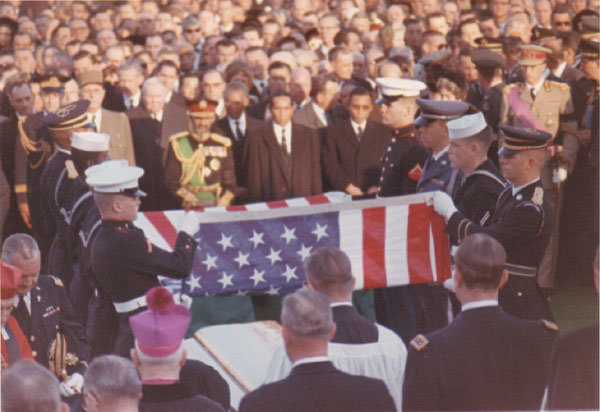
Military honor guard folds flag that draped JFK’s coffin, as the nation’s 35th President is laid to rest at Arlington National Cemetery. At graveside in uniform are Haile Selassie, Emperor of Ethiopia, center, left, and French President Charles de Gaulle, in brown uniform, at left. Standing behind Selassie & de Gaulle is West German Chancellor Ludwig Erhard. Just weeks before the assassination, de Gaulle had advised Kennedy not to get involved in Vietnam in order to avoid a quagmire similar to that which had previously engulfed French forces there.
Kennedy’s assassination was a cultural shock and shifted the mood from hope and enthusiasm to unrest, cynicism and violence. Historically, there’s even more speculation about Kennedy than Lincoln over what the final accomplishments would have been had he lived.
Would Kennedy have pulled back from the Vietnam War quagmire? Would all the vigor and positive activism he’d fostered have continued to grow? Would he have been as effective as Lyndon Johnson in passing important Civil Rights legislation?
In contrast to Lincoln, the conspiracy issue will always surround Kennedy’s assassination. There’s a public fascination with whether Lee Harvey Oswald acted alone or even was the murderer. It’s no surprise that the Sixth Floor Museum at the former Texas School Book Depository, where Oswald fired the fatal shots, remains a major tourist attraction in North Texas.
Ironically, the refusal of our government to release all the relevant material related to the assassi- nation will continue to fuel interest in the death of Kennedy every time the date of Nov. 22nd rolls around each year.
davidmaril@hermanmaril.com
“Inside Pitch” is a weekly opinion column written for Voice of Baltimore by David Maril.
CHECK OUT LAST WEEK’S “INSIDE PITCH” COLUMN: click here
…and read previous Dave Maril columns by clicking here.
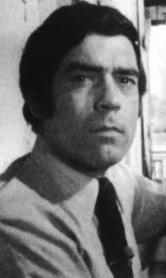




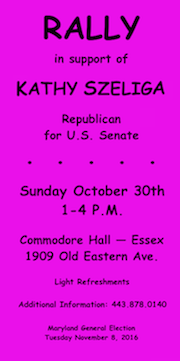

November 24th, 2013 - 10:38 PM
[…] OUT LAST WEEK’S “INSIDE PITCH” COLUMN: click here …and read previous Dave Maril columns by clicking here. Filed under: Top Stories […]
November 25th, 2013 - 6:10 AM
?????????????????????????????????????????????????????